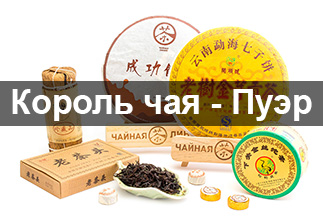Shu Puer 2020 "Friendship" from Tea Line: A Warm Hug in Every Cup
Shu Puer 2020 "Friendship" from the Tea Line brand is not just tea, it is an invitation to the world of harmony and comfort. This puer, created from high-quality raw materials collected on the famous tea plantations of Jingmai, has a soft, balanced taste and a rich aroma that warms the soul and lifts the mood.
Origin and production
The tea is made from high-quality raw materials collected in 2018 on the Jingmai tea plantations (景迈, jǐngmài), located in Yunnan Province. It is in this region that some of the best varieties of tea leaves for the production of shu pu-erh are grown. Freshly picked leaves underwent traditional fermentation in heaps and were pressed into a square cake (fan cha) in 2020. This production method gives the tea its characteristic rich taste and aroma.
Taste and aroma
Aroma: When dry – subtle, slightly perceptible sweetish-woody. After brewing – a palette of aromas opens up: woody trail, moss, light mushroom note, dry bark, limestone heated in the sun, acorn.
Taste: Soft, rich, creamy-woody, caramel-chocolate.
Aftertaste: Long, milky and creamy with notes of biscuit and toffee.
Colour of the infusion: Red-brown, slightly cloudy due to the villi from the tea buds.
Beneficial properties
Shu Puer "Friendship" has a number of useful properties:
- Warming effect: Helps to warm up in cold weather.
- Tonic effect: Gives vigor and energy.
- Mood enhancement: Uplifts mood and creates a feeling of comfort.
- Beneficial effect on digestion: Promotes normal functioning of the gastrointestinal tract.
Customer Reviews
Many tea lovers note the perfect combination of taste, strength and quality in the Druzhba puer. Its soft, balanced taste and pleasant aftertaste make it one of the favorites in the new line of teas.
How to brew
For brewing Shu Puerh "Friendship" it is recommended to use a teapot made of Yixing clay or a porcelain gaiwan. Water temperature is about 95°C. The brewing time of the first infusion is 30-40 seconds, subsequent infusions can be increased by 10-15 seconds.
Shu Puer "Friendship" is a great choice for those who value quality and natural taste. This tea will be a great addition to your tea collection and will allow you to enjoy the warmth and comfort of each cup.
When dry, puerh tea has a subtle, slightly perceptible sweetish-woody aroma.
After the first rinse, a palette of aromas opens up: a woody trail, moss, a light mushroom note, dry bark, limestone heated by the sun, acorn.
The taste of brewed tea is very soft, rich, creamy-woody, caramel-chocolate. You can feel the pleasant oiliness and thickness of the red-brown infusion, a little cloudy due to the villi from the tea buds, which are present in large quantities in the raw material.
This pu-erh can withstand up to 7 full steepings at a ratio of 10 g per Yixing clay teapot or gaiwan with a volume of 150-200 ml.
The aftertaste is long, milky and creamy with notes of biscuit and toffee.
Puer warms well, tones, gives confidence and strength, lifts the mood. It will be an ideal option for a long friendly conversation, for daily tea drinking or for tea ceremonies in nature.
The new 2020 shu puerh "Druzhba" from the "Tea Line" brand perfectly combines: high quality, soft balanced taste of the infusion and the correct tea state.
|
Country
|
China |
|
Provinces
|
Yunnan (云南) |
|
Habitat
|
Цзинмай (景迈, jǐngmài) |
|
Manufacturer
|
Чайная Линия |
|
Raw material production date
|
2018 |
|
Year of pressing
|
2020 |
|
Pressing form
|
Fang Cha (Square Tea) |
|
Declared weight, g
|
90 |
- Комментарии
- Вконтакте
Pu-erh is one of the most unique types of tea, which only gets better with age. Many people, when they first encounter this tea, wondered: why is pu-erh more often found in pressed form (cakes, bricks, tochas), and not in loose form? The reasons for this are related to both history and the practical aspects of storing and fermenting tea. Despite modern technologies that allow the production of loose pu-erh, the shape of pressed cakes remains unchanged. And pu-erh is more often found on sale in pressed form, for example, in the form of cakes or bricks, and loose pu-erh is less common. We will talk about the reasons for pressing pu-erh into cakes in this article.
Puer is a unique Chinese tea that is distinguished by its depth of taste, complexity of aromas and versatility of aftertaste. Its taste characteristics are formed under the influence of many factors, from growing conditions to the brewing method. Let's look at the main ones.
Jingmai Mountain is the birthplace of tea and one of the six major tea mountains in China. This mountain is home to the oldest and largest cultivated ancient tea garden in the world, which has witnessed the development of Chinese tea culture. Jingmai Mountain is famous for its long history of producing high-quality Pu'er tea.
Over time, some consumers who are part of the country's "tea elite" discover mainland Chinese tea. And only a few get acquainted with Taiwanese varieties. The path of a tea person is usually long and thorny, but ultimately it leads to the King of Teas - puer. But not everyone is able to go all the way from ordinary teas to puer and appreciate its qualities.
The tea ceremony occupies a special place in the centuries-old Eastern tradition. And although the essence of this phenomenon remains constant, the nature and external manifestations of the tea ceremony in different nations have their own national characteristics. In each Chinese province, the tea ceremony and the tea used in it are varied: for example, residents of the southern provinces prefer green tea, and residents of the northern provinces - red tea, in Fujian province they more often use Oolong tea, and in Yunnan province Puer tea is widely known.




























































































